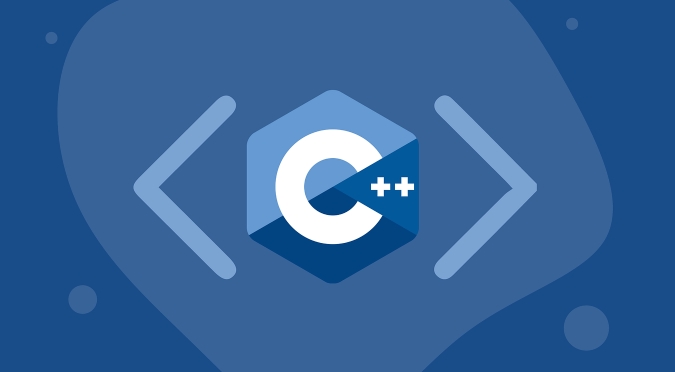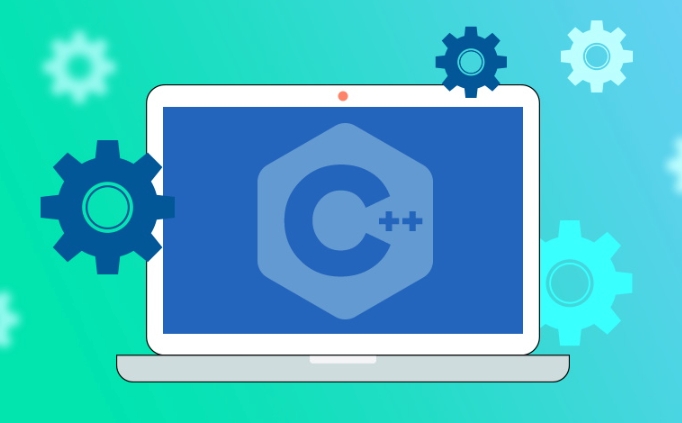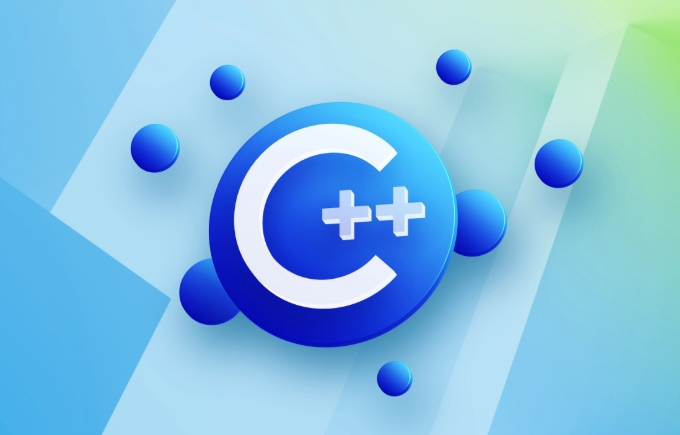Class templates are common classes in C that can handle different types of data, avoiding duplicate code. It is defined through the template keyword, and uses typename or class to specify type parameters, such as template

When writing C code, if you want a class to handle different types of data but don’t want to repeat many similar codes, then Class Templates are your good helper. It is not magic, nor is it particularly difficult. It is just that many people think it is circumcised at first, but it is quite natural after understanding the structure.

What is a class template?
Simply put, class templates are a way to make classes support generic programming. You can understand it as a "mold for making cakes". The mold itself does not have a specific taste. It will only become a specific class when you pour the material (such as int, float or custom type) into it.
For example, std::vector in the standard library is a class template that can install int, string, and even classes you write yourself without having to write a vector for each type.

How to define a class template?
The keyword that defines a class template is template , followed by <typename t></typename> or <class t></class> (both are basically the same), and then write the class structure normally.
For example:

template <typename T>
class Box {
private:
T value;
public:
Box(T v) : value(v) {}
void print() { std::cout << value << std::endl; }
};This code defines a box that can hold any type of data. When used it like this:
Box<int> intBox(123);
Box<std::string> strBox("Hello");The compiler will automatically generate the corresponding class for you based on the type you pass in.
What is the difference between a class template and a normal class?
The biggest difference is that the class template does not generate code directly at compile time and will only be instantiated when it is used . That is, if you only write the template but don't use it, the compiler won't generate any actual class code.
This has several implications:
- If you write a complex class template but use only a small part of the functionality, the other unused parts may not be compiled at all.
- The template code must be placed in the header file, and the declaration and implementation cannot be separated like ordinary classes. Because the compiler needs to see the complete template definition in order to instantiate it.
What should you pay attention to when using class templates?
There can be multiple template parameters
template <typename T, typename U> class Pair { T first; U second; };Default template parameters
template <typename T = int> class MyContainer {};In this way, if no type is specified, int will be used by default.
Specialization is important Sometimes you want to do different processing for certain types, such as copying strings to
char*instead of pointer assignments, so you need specialization:template <> class Box<char*> { // Special processing logic};Template parameters are not just types You can also pass non-type parameters such as integers:
template <int Size> class StaticArray { int data[Size]; };
Some tips for writing templates
- Don’t pursue complexity when you are beginners, and first master the basic structure.
- If you look at the source code of STL, such as the template implementation of vector and map, you can learn a lot of routines.
- When debugging template errors, don't be afraid to see the compiler errors. Although there is a lot of information, the prompt position is usually very accurate.
- If the template error occurs, try to simplify the problem and test it in segments, and do not pile too many functions at once.
Basically that's it. Class templates look a bit abstract, but if you use them too much, you will find that it is actually a tool that allows you to write less repetitive code, which is not complicated but is easy to ignore details. Take your time and experience it while writing.
The above is the detailed content of C Class Templates Explained. For more information, please follow other related articles on the PHP Chinese website!

Hot AI Tools

Undress AI Tool
Undress images for free

Undresser.AI Undress
AI-powered app for creating realistic nude photos

AI Clothes Remover
Online AI tool for removing clothes from photos.

Clothoff.io
AI clothes remover

Video Face Swap
Swap faces in any video effortlessly with our completely free AI face swap tool!

Hot Article

Hot Tools

Notepad++7.3.1
Easy-to-use and free code editor

SublimeText3 Chinese version
Chinese version, very easy to use

Zend Studio 13.0.1
Powerful PHP integrated development environment

Dreamweaver CS6
Visual web development tools

SublimeText3 Mac version
God-level code editing software (SublimeText3)

Hot Topics
 What is the role of C++ templates in game development?
Jun 03, 2024 pm 07:51 PM
What is the role of C++ templates in game development?
Jun 03, 2024 pm 07:51 PM
Templates are a generic pattern in C++ for code reuse, efficiency improvement, and high customization. In game development, they are widely used: Containers: Create a container that can store various types of data. Algorithm: Create an algorithm that can be applied to various data types. Metaprogramming: Generate code at compile time to achieve runtime customization.
 How to use friend functions in class templates?
Apr 17, 2024 am 10:36 AM
How to use friend functions in class templates?
Apr 17, 2024 am 10:36 AM
Using friend functions in a class template allows external functions to access private members. Steps: Declare a friend function: Use the "friend" keyword in the class template. Define friend functions: Use the type parameters of the class template to make it applicable to all types. Use friend functions: Call friend functions just like calling ordinary member functions.
 C++ compilation error: Class template not found, how to solve it?
Aug 22, 2023 am 11:10 AM
C++ compilation error: Class template not found, how to solve it?
Aug 22, 2023 am 11:10 AM
With the continuous development of computer technology, C++, as an efficient and flexible programming language, has been widely used in software development. However, it is inevitable to encounter various compilation errors when writing C++ code. One of the common problems is the compilation error: class template not found. This article will detail the causes and solutions to this error. Cause of the error In C++, class templates are a very useful programming tool that can generalize different types of classes with the same properties and operations. However, when using class templates in a program,
 C Deep Dive: Mastering Memory Management, Pointers, and Templates
Apr 07, 2025 am 12:11 AM
C Deep Dive: Mastering Memory Management, Pointers, and Templates
Apr 07, 2025 am 12:11 AM
C's memory management, pointers and templates are core features. 1. Memory management manually allocates and releases memory through new and deletes, and pay attention to the difference between heap and stack. 2. Pointers allow direct operation of memory addresses, and use them with caution. Smart pointers can simplify management. 3. Template implements generic programming, improves code reusability and flexibility, and needs to understand type derivation and specialization.
 How to use templates in C?
Apr 28, 2025 pm 09:21 PM
How to use templates in C?
Apr 28, 2025 pm 09:21 PM
C templates are used to implement generic programming, allowing for the writing of general code. 1) Define template functions, such as max functions, which are suitable for any type. 2) Create template classes, such as general container classes. 3) Pay attention to template instantiation, compilation time, template specialization, debugging and error information. 4) Follow best practices, keep the code simple, and consider using constraint template parameters.
 What is the role of C++ templates in high-performance computing?
Jun 02, 2024 pm 12:44 PM
What is the role of C++ templates in high-performance computing?
Jun 02, 2024 pm 12:44 PM
The role of C++ templates in high-performance computing: Code reuse: Allows code to be written once, applicable to different data types, improving reusability. Minimize overhead: Reduce typing overhead and improve performance through code generation instead of runtime type checking. Portability: Expanded at compile time, making it easier to port code across different platforms.
 Detailed explanation of C++ template metaprogramming
Aug 22, 2023 pm 02:25 PM
Detailed explanation of C++ template metaprogramming
Aug 22, 2023 pm 02:25 PM
C++ template metaprogramming is an advanced programming technology in C++. Through template metaprogramming, programmers can implement more complex logic processing and data operations during the compilation phase, thereby improving the performance and maintainability of the program. This article will introduce in detail the basic knowledge and application examples of C++ template metaprogramming. Basic concepts and principles of C++ template metaprogramming C++ template metaprogramming can implement some conventional flow control statements and algorithm operations during the compilation phase, which can make the program more efficient at runtime. The basic principle is: open
 C++ syntax error: Class template member function cannot be a virtual function, what should I do?
Aug 22, 2023 am 10:09 AM
C++ syntax error: Class template member function cannot be a virtual function, what should I do?
Aug 22, 2023 am 10:09 AM
C++ is a widely used programming language. As a strongly typed, general-purpose, object-oriented programming language, it is efficient, stable, and scalable. In the C++ programming process, using classes and templates can help us implement our code logic quickly and effectively. However, some problems may be encountered in the actual process, such as the problem that class template member functions cannot be virtual functions. This situation usually occurs when using template classes. We define a template class and define some virtual functions in it, but the compiler reports






